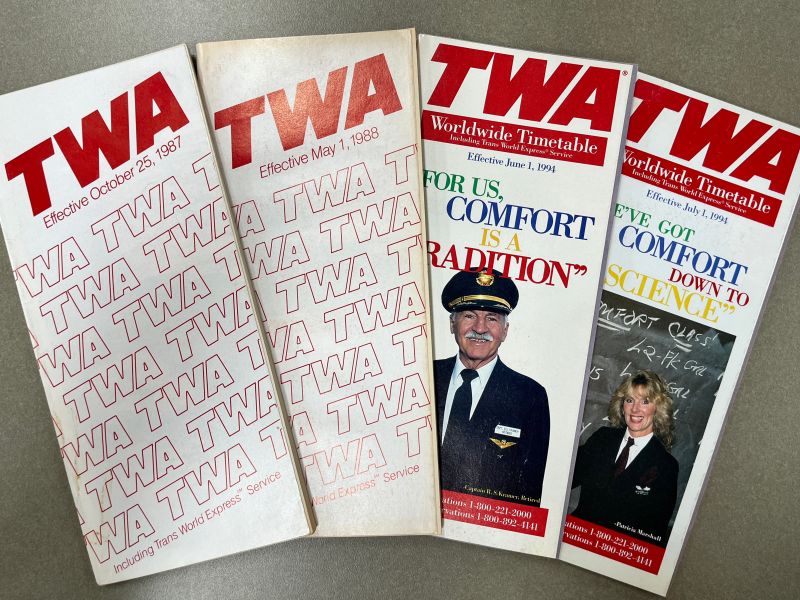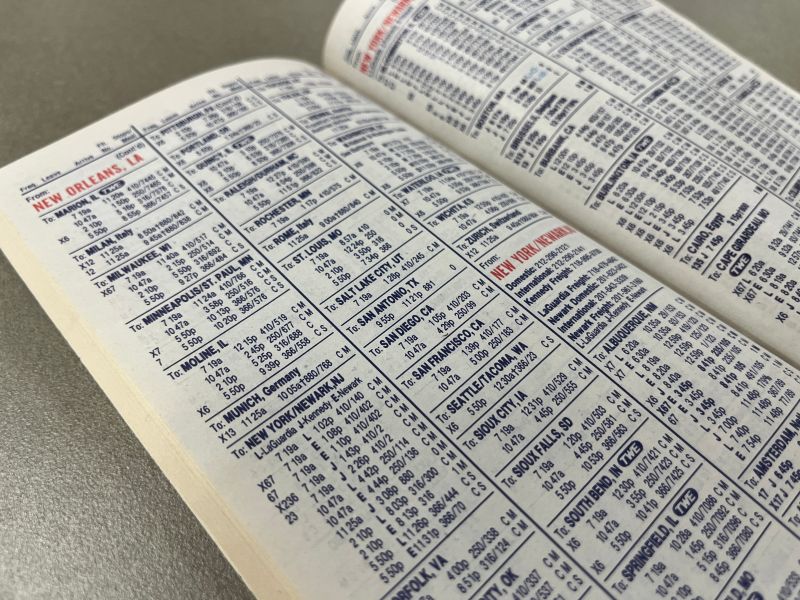For the longest time, my flight log only had flights going back to 2001, even though the first time I flew was in 1987. I’d always wanted to go back and add all my early flights, but finding that old flight info out with any reasonable certainty was very difficult. I had no boarding passes, no email itineraries, and none of the other ways I typically found my old flights.
This year, I made it a priority to finally go back and research those old flights, largely by interviewing family members and searching through old airline timetables. With a few months of work, I was able to successfully find my most likely flights from my childhood.
Table of Contents
My Old Trips
I grew up in a military family, with both parents in the US Air Force. We moved quite a bit when I was young, including living overseas. These moves accounted for the majority of my early flights.
Move to West Berlin
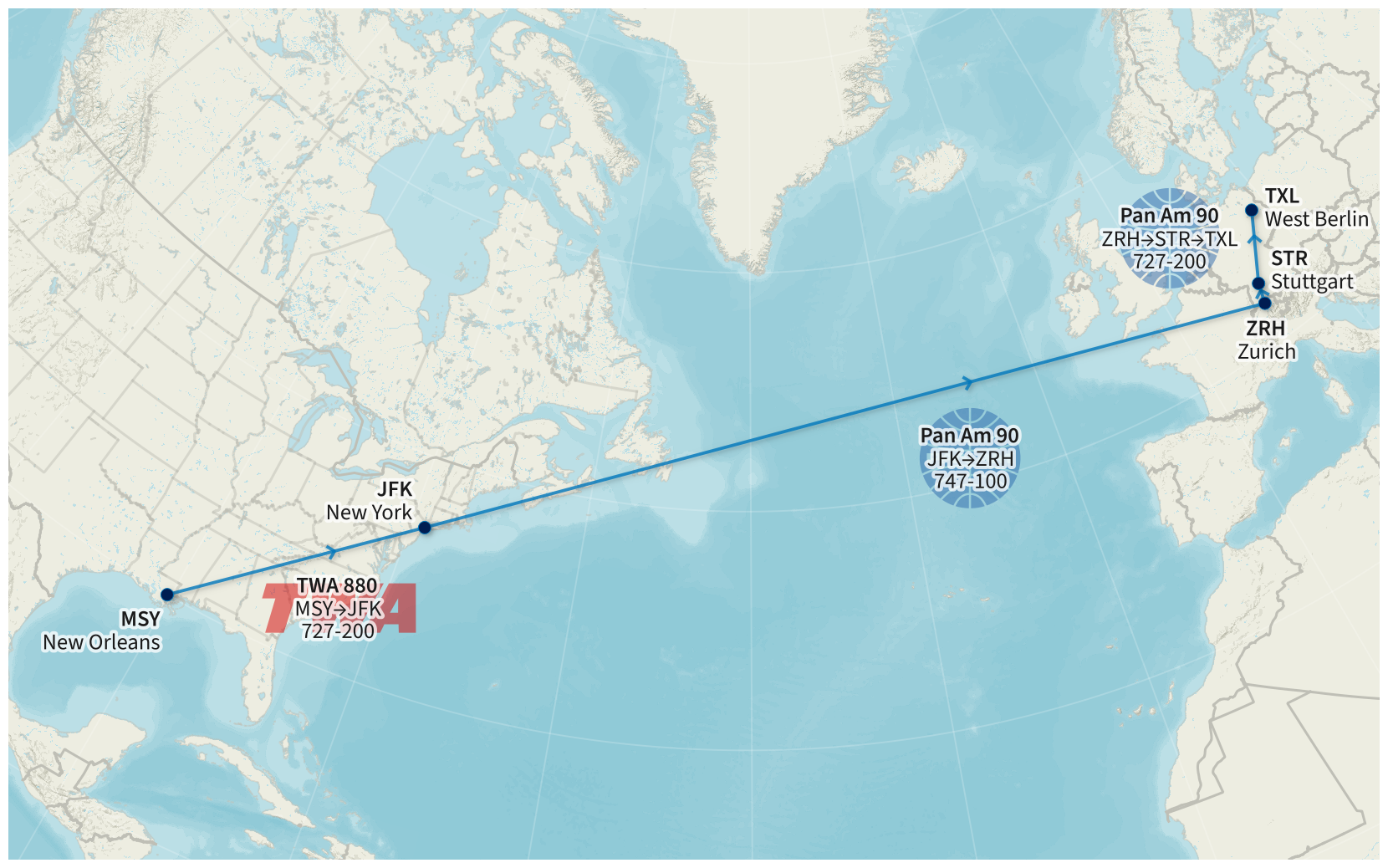
Move to West Berlin. Flights from New Orleans to West Berlin, 7–8 December 1987.
Basemap © Mapbox © OpenStreetMap (Improve this map)
I was born in Colorado, but when I was three years old, we moved to what was then West Berlin in West Germany. (I lived inside the Berlin Wall before it fell, but I wasn’t quite old enough to have any memory of it!)
We drove to New Orleans to have our car shipped overseas. From there, we flew from New Orleans (MSY) to New York–JFK (JFK), then had to change terminals to fly from JFK to Zurich (ZRH) to Stuttgart (STR) to Berlin–Tegel (TXL).
As effectively a political island beyond the Iron Curtain, only a few airlines were able to fly to Berlin at the time; for US carriers, that realistically meant TWA and Pan Am. I was able to find the Pan Am timetable for the end of 1987 digitized online; it showed that Pan Am operated JFK–ZRH–STR–TXL on a single flight number (PA 90), despite a change of aircraft type at Zurich. Since this matched our route exactly and TWA didn’t have the same route, it was very likely that we flew those three segments on PA 90.
However, Pan Am did not serve New Orleans in December 1987—we had to have flown another airline to JFK, which also explains the change in terminal. According to my parents, the Air Force usually preferred to use TWA for their commercial flights at the time. Though I couldn’t find most TWA timetables online, I bought some from eBay and found a MSY–JFK flight whose arrival time made sense.
TWA timetables, and flights from New Orleans in the October 1987 timetable
Move to Illinois
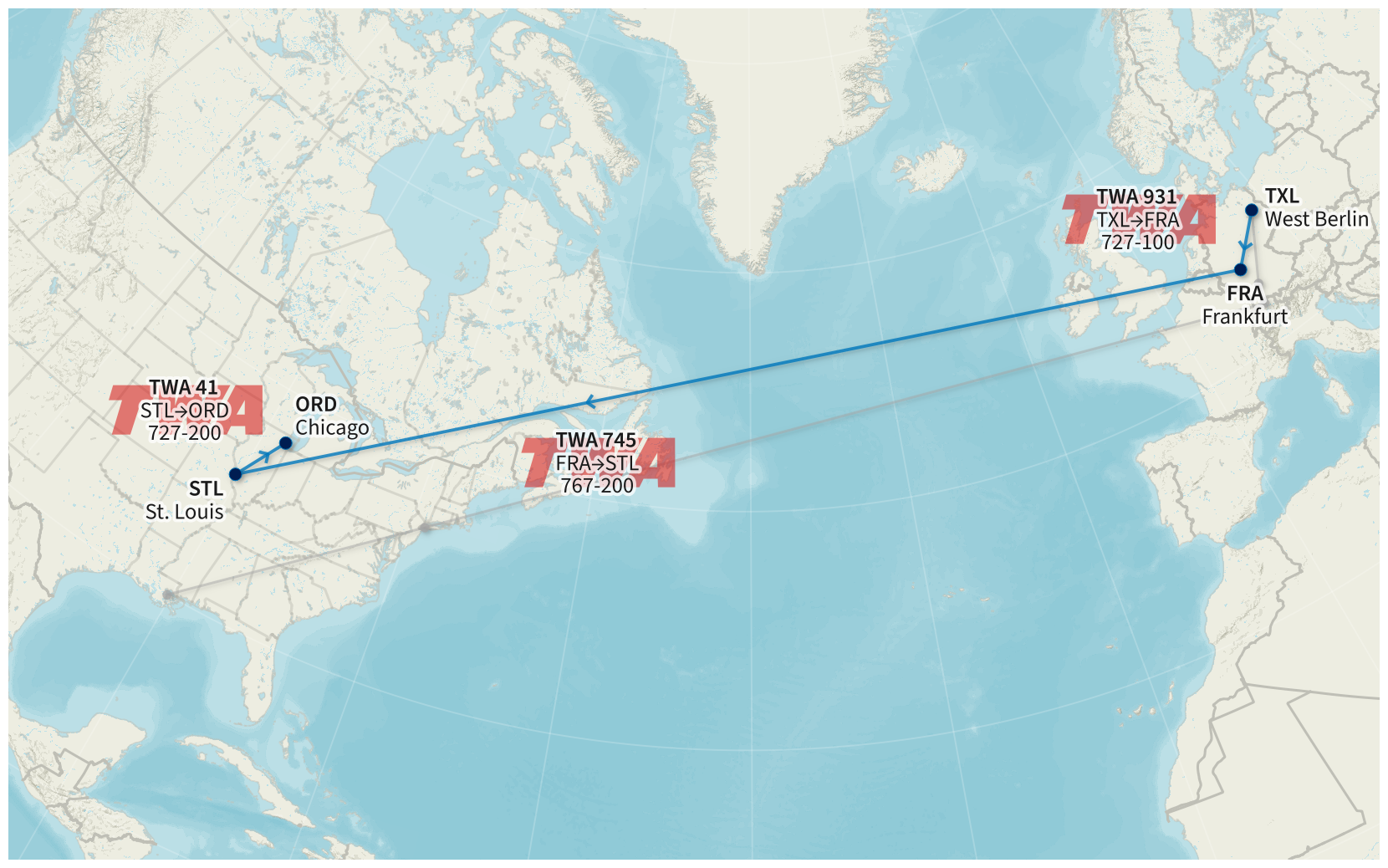
Move to Illinois. Flights from West Berlin to Chicago, 14 May 1988.
Basemap © Mapbox © OpenStreetMap (Improve this map)
We moved back to the states less than half a year later, moving to Chanute Air Force Base near Rantoul, Illinois. My parents remembered clearing customs in St. Louis (STL). This meant we flew TWA, as TWA had a major hub at STL which had European flights in 1988. I again used printed TWA timetables and was able to find a reasonable TXL to Frankfurt (FRA) to STL to Chicago–O’Hare (ORD) routing.
Move to England

Move to England. Flights from Chicago to RAF Lakenheath, 24 August 1991.
Basemap © Mapbox © OpenStreetMap (Improve this map)
A few years later, Chanute was getting ready to permanently close, and my family was moved to RAF Mildenhall in the United Kingdom. We again flew through STL, but from there we flew on a Military Airlift Command (MAC) charter directly to RAF Mildenhall (MHZ). From my research, this charter was most likely to have been operated by Northwest Airlines on a Boeing 747-200.
Chicago Family Visit
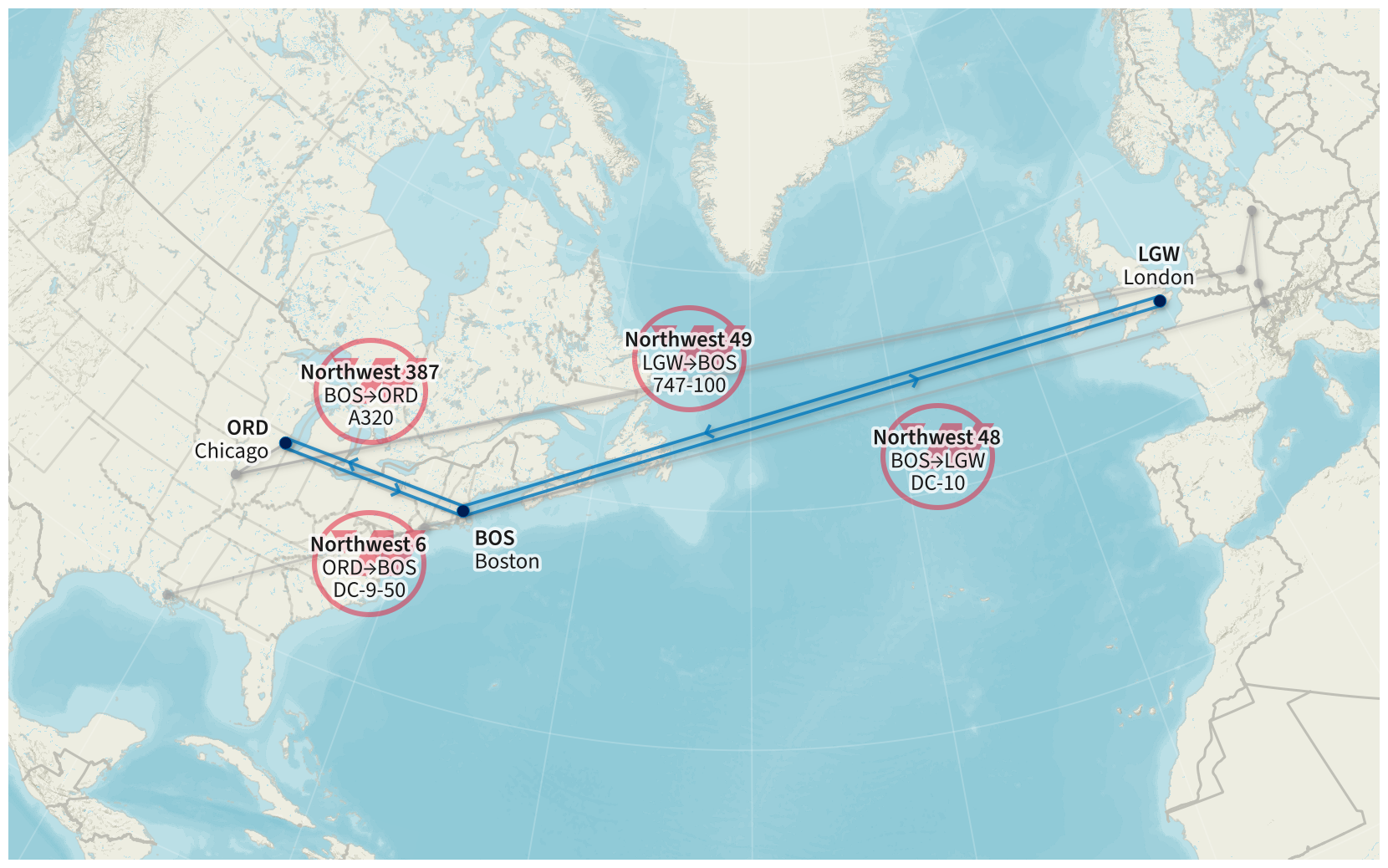
Chicago Family Visit. Flights from London to Chicago, 8 July 1994; flights from Chicago to London, 13–14 August 1994.
Basemap © Mapbox © OpenStreetMap (Improve this map)
In the summer of 1994, we were still living in England, but took a trip back to the U.S. to visit family near Chicago for a month.
The flights to Chicago were on my tenth birthday, and I very specifically remembered that I got to play Super Mario World on a Super Nintendo system built into my transatlantic airplane seat. (It had been the first time I’d ever played SNES games, since we only had an NES.) This was immensely helpful, since it narrowed down my search to airlines who had the Nintendo Gateway System installed in their planes. Given my itinerary, my flight from London must have been on Northwest Airlines.
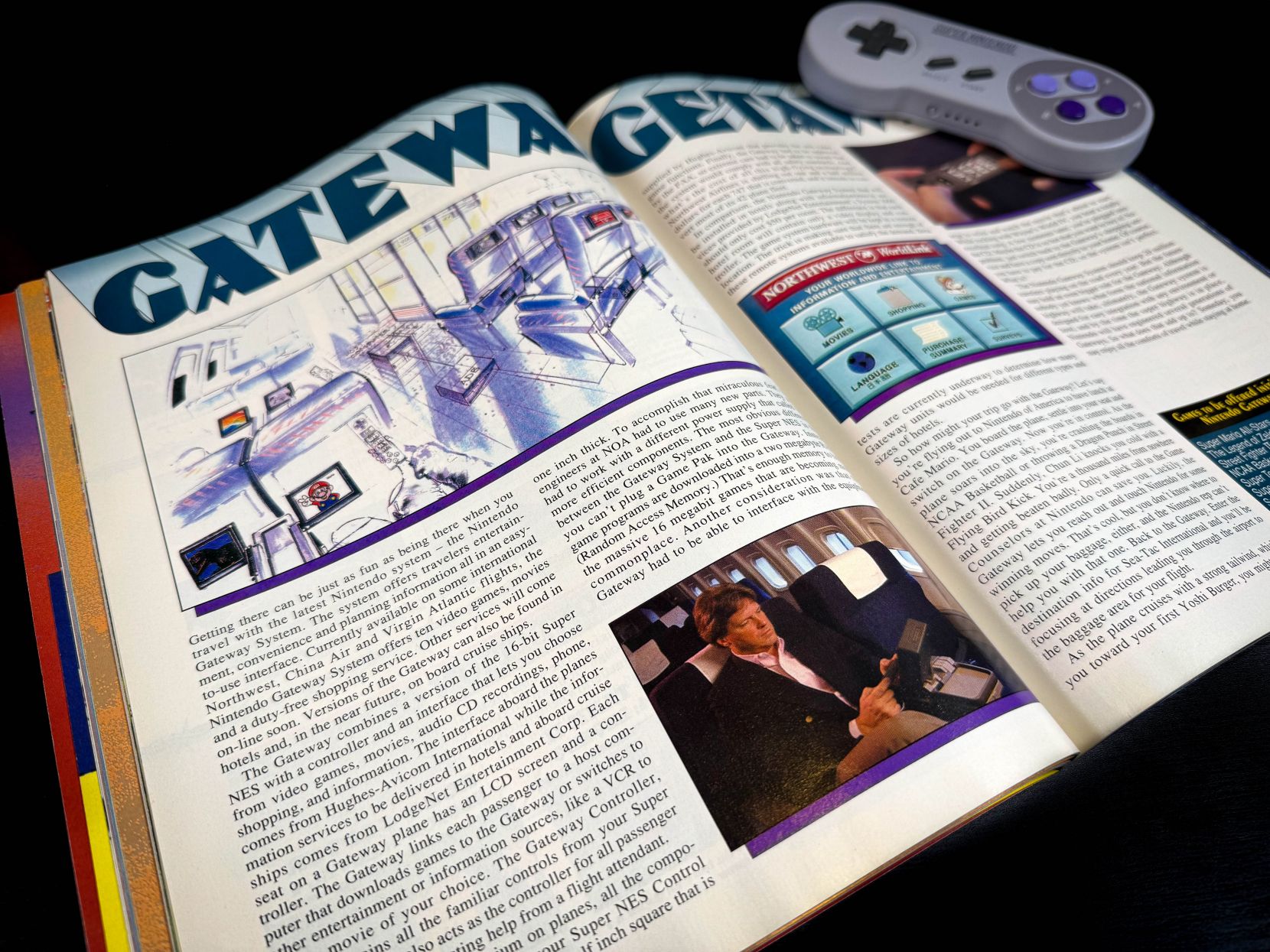
Nintendo Power had an article about the Nintendo Gateway System (“Gateway Getaway,” vol. 57, 52–53), which helped me confirm that Northwest used the system on their Boeing 747 fleet.
Photo by Stephen Georg
At the time, Northwest only served London through Gatwick (LGW), and only via Boston (BOS) and Minneapolis/St. Paul (MSP). I remembered a layover at Boston Logan’s terminal E. Although Northwest’s timetables showed LGW–BOS using a DC-10, the Bureau of Transportation Statistics (BTS) T-100 segment tables showed that Northwest operated both DC-10s and 747s on that route in July 1994. (By August, when I flew back to London, the route was again using only DC-10s.)
Move to Ohio
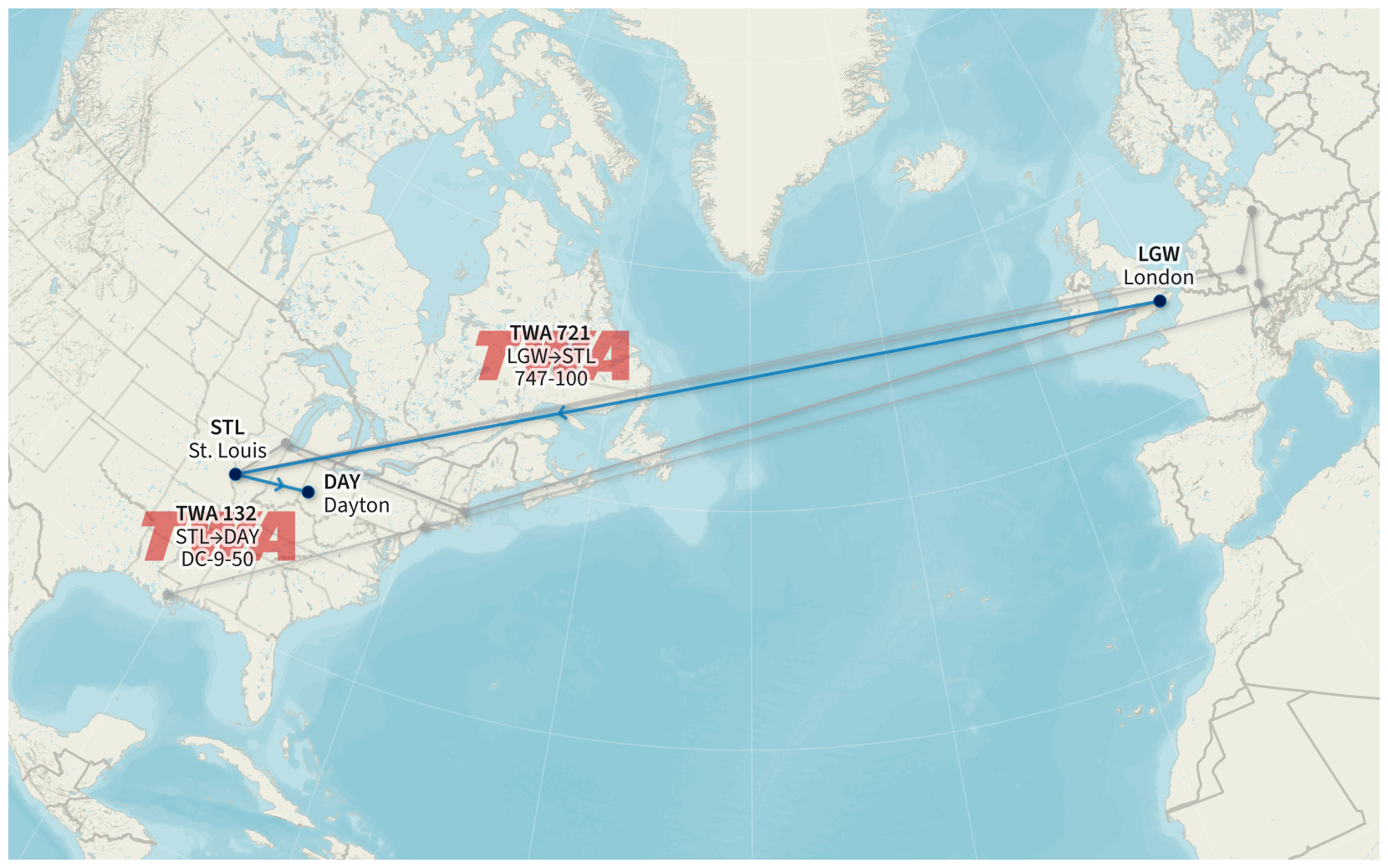
Move to Ohio. Flights from London to Dayton, 4 September 1994.
Basemap © Mapbox © OpenStreetMap (Improve this map)
We moved back to the United States on Labor Day weekend 1994, heading to Wright-Patterson Air Force Base near Dayton, Ohio. Once again, TWA was the preferred airline, as I specifically remember spending our layover at the USO lounge on the lower level of the St. Louis terminal.
Texas Vacation
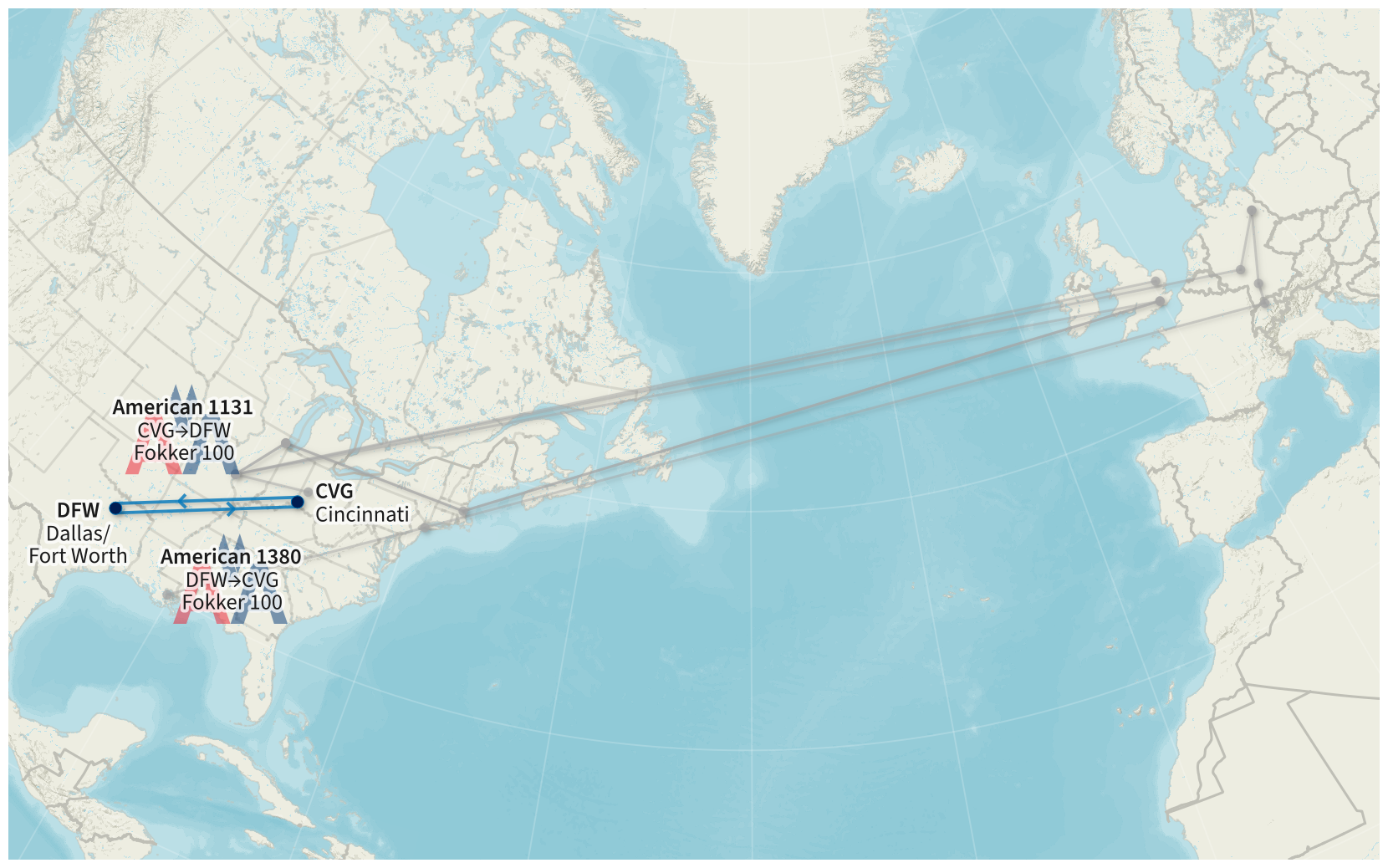
Texas Vacation. Flight from Cincinnati to Dallas/Fort Worth, 26 December 1996; flight from Dallas/Fort Worth to Cincinnati, 3 January 1997.
Basemap © Mapbox © OpenStreetMap (Improve this map)
By 1996, my parents had retired from the Air Force, and we were still living near Dayton. We had family in Texas, and although we’d road-tripped from Ohio to Texas a year prior, for the 1996–1997 winter break we’d decided to fly.
Fortunately, I’d written about this trip in excruciating detail (down to the minute we departed) as an essay for a school assignment, which I discovered in an old archive of my documents from middle school. This made it easy to look up the specific flights in the BTS Airline On-Time Performance Data.
“New” Airlines


With the addition of these old trips, I’ve added a few airlines which were not previously in my flight log: TWA and Pan Am. (Northwest was already in my flight log from a single round trip in 2007.) Pan Am ceased operations in 1991. TWA lasted until December 2001, which meant it technically overlapped my flight log’s prior earliest flights in March 2001, but those flights were on Delta.
“New” Aircraft
Likewise, there were four aircraft families I’d not previously logged.

Aircraft illustration by Norebbo
It had always bothered me that the iconic Boeing 747 was not in my flight log, even though I knew I’d flown on it a few times growing up. To be honest, this was the biggest motivation in me finally taking the time to do the research and find my old flights. (With very few passenger airlines still operating the 747, it’s pretty unlikely that I’ll get the chance to fly it again.)

Aircraft illustration by Norebbo
My first and only flight on a DC-10 was returning from our 1994 Chicago trip back to London. (I had been on a tour of a KC-10, a military variant of the DC-10, but the aircraft was on the ground.)

Aircraft illustration by Norebbo
By adding the 727 (and the 747 above) to my flight log, I now have flown on every Boeing 7X7 series1 aircraft except the 707.

Aircraft illustration by Norebbo
My only flights on any Fokker aircraft were the flights from my Texas vacation, both operated on a Fokker 100.
Flight Data References
The University of Miami Libraries have old Pan Am timetables in their Pan American World Airways Records collection. Northwest Airlines timetables can be found at the Northwest Airlines History Center. Unfortunately, I was unable to find an archive of TWA timetables online and had to buy them from eBay.
DepartedFlights.com has a number of Official Airline Guide historic flight schedules. Select a date and an arrival airport to get a summary of airlines, cities, and aircraft serving the airport. At the bottom of the summary page is a tiny link to detailed flight schedules, giving specific times, flight numbers, and aircraft for each flight.
The Bureau of Transportation Statistics (BTS) has an aviation data library. The Air Carrier Statistics (Form 41 Traffic) have monthly totals of aircraft types by route, going back to 1990, for both U.S. domestic flights and international flights involving a U.S. airport. (Use the T-100 Segment tables.) The Airline On-Time Performance Data tables have details for individual domestic flights on major U.S. carriers since 1987, including tail numbers starting in 1995.
Planespotters.net airline fleets are a good place to see what aircraft specific airlines were operating at a given time, and to correlate tail numbers from BTS into aircraft types.
The Airliners.net forum is a decent general place to search for flight info; many posts will have details about specific historic routes and flights.
-
The 7X7 series consists of the Boeing 707, Boeing 717, Boeing 727, Boeing 737, Boeing 747, Boeing 757, Boeing 767, Boeing 777, and Boeing 787. ↩︎
